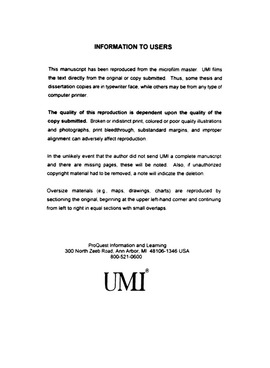| dc.contributor.advisor | Roe, Bruce, | en_US |
| dc.contributor.author | Lewis, Sharon Ann. | en_US |
| dc.date.accessioned | 2013-08-16T12:18:49Z | |
| dc.date.available | 2013-08-16T12:18:49Z | |
| dc.date.issued | 2002 | en_US |
| dc.identifier.uri | https://hdl.handle.net/11244/537 | |
| dc.description.abstract | A whole-genome random shotgun (WGS) sequencing method was used to obtain the working draft sequence. To date, over 99 percent of this approximately 3.4 Mbp Bacillus stearothermophilus genome has been sequenced from small-insert pUC and large insert P1 clones with average insert size between 1.5 and 6.0 kbp. A total of approximately 78,000 shotgun sequence reads with lengths averaging 505 bp were obtained from double stranded DNA sequencing templates. The sequence reads were assembled using the phred/phrap program after sequencing these subclones with various different chemistries, that included the ABI Big Dyes, Big Dye dGTP or dRhodamine mixes with nested fragment set resolution on the ABI 3700. Gaps in the sequences were closed using primer walking, uniplex and multiplex PCR (2). | en_US |
| dc.description.abstract | Analysis of the genomic sequence of Bacillus stearothermophilus supports the hypothesis that several features in thermophilic organisms contribute to the ability of these organisms to thrive at elevated temperatures. In Bacillus stearothermophilus, these features include G-C and A-T clusters in its genome, the overabundance of saturated fatty acids in its lipids, and the overall amino acid composition of its proteins, which have elevated levels of arginine residues in comparison to mesophilic Bacillus species. | en_US |
| dc.description.abstract | Bacillus stearothermophilus is a Gram-positive, obligate, thermophilic bacterium with an optimal growth temperature of 65 to 70 degrees Celsius. It is a non-photosynthetic, spore forming, rod-shaped bacterium. Strain 10 was originally isolated by Dr. Jochanan Stenesh from hot springs of Yellowstone National Park (1), although it initially was discovered in a spoiled can of corn. | en_US |
| dc.description.abstract | The major goal of this research was to determine the working draft sequence of the Bacillus stearothermophilus genome, identify its approximately 2,731 open reading frames and describe the metabolic pathways while noting the differences. The lysine pathway in Bacillus stearothermophilus follows the succinylated pathway while Bacillus subtilis follows the acetylated pathway. In addition, Bacillus stearothermophilus encodes seventeen genes involved in the aerobic synthesis of cobalamin, which is a vitamin not synthesized by Bacillus subtilis strain 168. | en_US |
| dc.format.extent | xvi, 197 leaves : | en_US |
| dc.subject | Biology, Molecular. | en_US |
| dc.subject | Chemistry, Biochemistry. | en_US |
| dc.subject | Bacillus (Bacteria) | en_US |
| dc.subject | Genomes. | en_US |
| dc.subject | Gram-positive bacteria. | en_US |
| dc.title | The working draft sequence of the Gram-positive bacteria Bacillus stearothermophilus strain 10 genome, its analysis, and annotation. | en_US |
| dc.type | Thesis | en_US |
| dc.thesis.degree | Ph.D. | en_US |
| dc.thesis.degreeDiscipline | Department of Chemistry and Biochemistry | en_US |
| dc.note | Source: Dissertation Abstracts International, Volume: 63-11, Section: B, page: 5222. | en_US |
| dc.note | Adviser: Bruce Roe. | en_US |
| ou.identifier | (UMI)AAI3070642 | en_US |
| ou.group | College of Arts and Sciences::Department of Chemistry and Biochemistry | |
